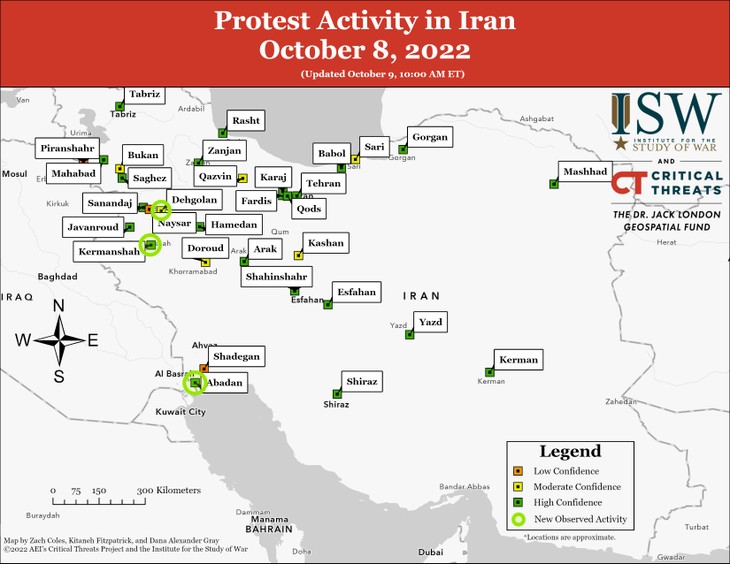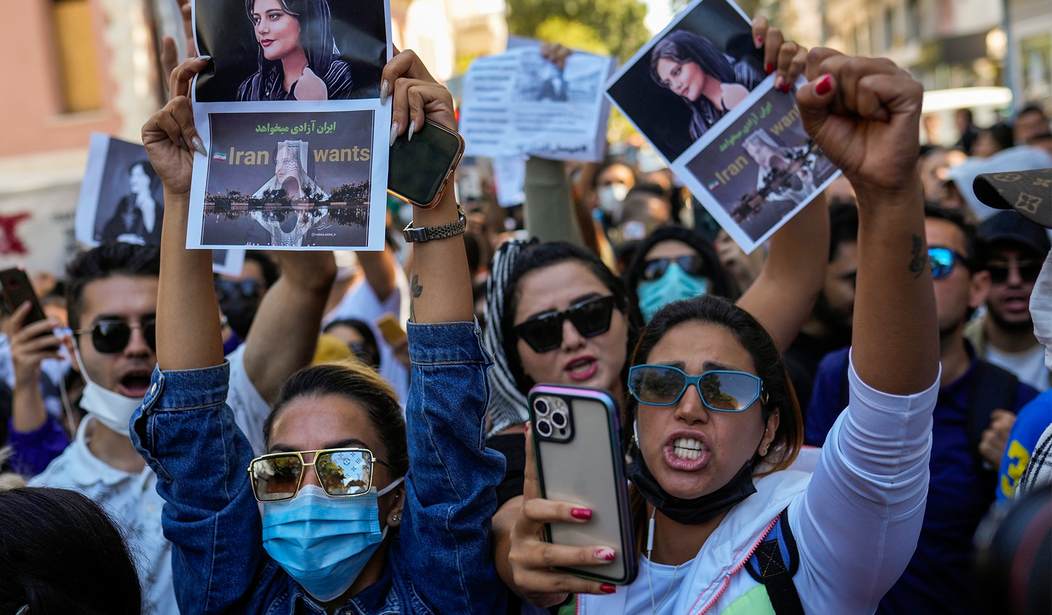The Iran oil industry — the Mullah regime’s chief source of income — faces potentially crippling strikes as workers join in the nationwide protest against the regime.
“Informed and bold oil workers will not be silent and passive in the face of the suppression and killing of people and will protest together and in unison with the people,” the Iranian Council for Organising Protests by Oil Industry Contract Workers said in a statement on Telegram, according to the Independent.
The Wall Street Journal noted that these demonstrations — wildcat strikes, really — mark “the first time the unrest that began last month has spread to Iran’s oil-and-gas industry.”
The Mullahs can’t claim they weren’t warned. Two weeks ago, the Organizing Council of Oil Contract Workers released a statement saying, “We support the people’s struggles against organized and everyday violence against women and against the poverty and hell that dominates the society.”
From Radio Farda (via Google Translate):
The contract workers in Iran’s oil industry “warned” the government that if “the arrests, the killing of people, the oppression and harassment of women because of the hijab, and the oppression of the people do not end”, they will not remain silent and “join all the people”.
Yet Tehran claims the strike/protest is merely a salary dispute involving a limited number of workers.
Here’s a short series of videos from around the Iran oil industry. All appear to be from the last day or so.
#BREAKING: Workers of #Iranian Oil refineries and petrochemical plants have started a nationwide strike & protest against #Iranian regime today. This is happening while university students & people are also protesting across #Iran. Video from #Bushehr today👇#Mahsa_Amini pic.twitter.com/RuFCDmcOtu
— Babak Taghvaee – Μπάπακ Τακβαίε – بابک تقوایی (@BabakTaghvaee) October 10, 2022
#BREAKING: All roads to the petrochemical plants of Asalouyeh are blocked by the oil workers who are protesting #Iranian regime. #Mahsa_Amini #مهسا_امینی pic.twitter.com/qnP43xlrq8
— Babak Taghvaee – Μπάπακ Τακβαίε – بابک تقوایی (@BabakTaghvaee) October 10, 2022
PJ Media’s own Rick Moran reported on Saturday that even schoolgirls have joined the nationwide protests that have left dead as many as 185 Iranian civilians.
Iran Human Rights claims that the dead “include at least 19 children,” according to The Hill, “with the highest number occuring [sic] in the Sistan and Baluchistan province, which is located in Iran’s southeast.”
This Critical Threats map is somewhat out of date, since it doesn’t show the protests in Sistan or Baluchistan, but it should give you a good idea.

(Deep background from Critical Threats here.)
Large areas in the northeast where there are no protests are also basically uninhabited.
The southeast is ethnically Baluch. Iran’s oil-rich southwest is mostly Arab and Lurs. Restive Kurds and Azeris make up most of Iran’s northwest. All are giving Tehran violent headaches. But not all the unrest is ethnically based. Core protests continue in the Persian heartland of Tehran and surrounding areas.
But shopkeepers, women, and schoolkids taking to the streets is not enough to bring down a government, particularly one as brutal as Iran’s.
When it comes to oil, however, cutting that off would be an existential threat to a regime that depends upon it for 60% of government revenue.
Freelance Middle East journalist Séamus Malekafzali wrote that if the strike spreads, “it could be a big escalation, as strikes at oil refineries in November 1978 were a large aspect of what put pressure on the Shah before he fled in January 1979.”
No oil, no money for the security troops murdering women in the streets. No oil, no money for torture cells. No oil, no imperial adventurism in Iraq and Syria. Most importantly: No oil, no graft.
I’m not getting my hopes up. The Mullahs regime has maintained power for so long by being much more willing than Shah Mohammad Reza Pahlavi ever was at spilling the blood of his own countrymen.
But if there is a way to end the Mullahs’ power, it’s to cut it off at the source of its wealth.
That’s the oil industry, and if persistent unrest takes hold among the country’s oil and gas extraction and processing workers, it might finally be Game Over for one of the world’s most brutal and oppressive regimes.
Exclusively for Our VIPs: Florida Man Friday: Chicago Man Tries to Rob Florida Man, Hilarity Ensues










Join the conversation as a VIP Member